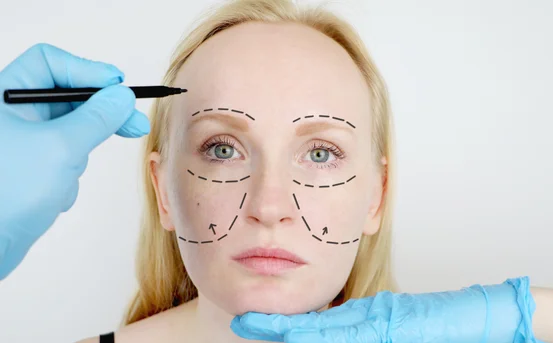Corpus Callosotomy Surgery is a surgical procedure done to treat severe, uncontrolled epileptic seizures. This particular surgery is usually recommended for children who experience drop attacks or generalized seizures which do not respond to treatment. This surgical approach is effective with the partially complete severing of the corpus callosum (a bundle of nerve fibers connecting the two hemispheres of the brain), and it helps to mitigate the movement of seizure activity between the two halves of the brain.
Learning about the corpus callosotomy surgery options could greatly benefit someone you know who is suffering from drug-resistant epilepsy. This document outlines the entire treatment process from indications to aftercare.
Reason for Treating With Corpus Callosotomy Surgery
Every surgery has its own set of limitations and with that comes reason for consideration. The same goes for Corpus Callosotomy:
- There is no active therapy and the condition is chronic (such as drug resistant epilepsy).
- With numerous neurological loci acting in unison, there is the presence of global seizure, resulting in generalized seizures stemming from multiple brain regions.
- There is a considerable amount of drop attacks (also known as atonic seizures) which lead to injuries.
- There are cases where partial seizures become generalized and violent shaking occurs.
The ultimate goal of this surgery is easier management of dangerous seizures, rather than removing all types of seizures.
Pre-Surgical Evaluation
Prior to suggesting a corpus callosotomy, a member of the neurology or neurosurgery team has to perform a Standard EEG and MRI checks that they have as a pre-surgical evaluation:
- EEG (Electroencephalogram):
This test assists doctors in the evaluation of the surgically treatable epilepsy by monitoring the brain’s electrical activities to identify the seizure onset.
- MRI and CT Scans:
Evaluated MRI and CT scans are conducted to determine the 27 mm/ lesions on the cerebrum.
- Psychological Review:
Using EEG’s, the patient’s memory and cognitive abilities are benchmarked to assess the possible post-surgical changes.
- Seizure Tracking:
Patients located in the EMU have video-EEG monitoring performed continuously which aids in understanding different types of seizures and their frequency.
Corpus Callosotomy Types
Based on the condition of the patient, the following types differ in their extent:
- Partial Callosotomy: Effective for moderate cases. Involves a less aggressive approach that surgically divides the sebaceous cyst capsule through the anterior two thirds of the corpus callosum.
- Complete Callosotomy: Done when the results of a partial surgery are deemed insufficient, resulting to a complete transection of the corpus callosum.
The Surgical Procedure:
This is commonly done under general anesthesia. It includes:
- Craniotomy: This involves a small opening of the skull to reach the brain.
- Corpus Callosum Identification: The corpus callosum is located with the help of neuronavigation and microscope tools.
- Severing the Nerve Fibers: The surgeon cuts the connecting nerve fibers that were associating the two sides of the brain. Communication between the hemispheres is lost.
- Closure: Stitches are placed onto the incision, and the skull bone is replaced.
Post surgical management and rehabilitation
The patient gets transferred to the ICU for monitoring, The rest of the recovery journey looks like this:
- Hospital Stay:
Patients usually stay in the hospital for about 3-7 days depending on their condition.
- Physical Therapy:
Some patients may require occupational and physical therapy for coordination and strength rebuilding.
- Seizure Activity Monitoring:
Doctors continue to evaluate seizure activity for measuring the effectiveness of the surgery.
- Medication Management:
While anti-epileptic drugs (AEDs) may still be needed, some dosages can be decreased.
- Follow Up Visits:
These visits are critical to monitor functional changes after surgery and manage side effects.
Benefits Gained From Corpus Callosotomy
- Significant decrease in sudden attacks and other types of dangerous seizures.
- Improved safety and quality of life, especially in younger patients.
- More control over seizures with medications due to less seizure spread.
- Fewer general seizures means a lower risk of injury.
Risks and Complications
Just like any other type of brain surgery, Corpus Callosotomy comes with certain risks, which may include:
- Challenges with speech and language skills.
- Difficulties with remembering and concentrating.
- Weakness, coordination, or difficulty in muscle control.
- Infection or bleeding.
- Very few patients may develop “disconnection syndrome,” which is a unique rare form of mixed up bodily side coordination issues.
The surgical team takes these risks into account and the surgery is done only after thorough reasoning.
Who Is An Ideal Candidate?
Recommended for:
- Children and adults who experience drop attacks and have a potential risk of injury.
- Patients suffering from generalized epilepsy who are unresponsive to anti-epileptic drugs.
- Patients who have not responded to surgical candidates because the epileptogenic zones are not removable.
- Patients who have multiple seizure foci and are not surgical candidates for focal resection due to not being acceptable for focal resection.
Alternative Treatment Options
Some cases of vertebral fractures or fractures due to osteoporosis can be treated with different methods including:
- Vagus nerve Stimulation (VNS)
- Responsive Neurostimulation (RNS)
- Ketogenic Diet
- Coronal plane of resection with other resective procedures in epilepsy.
Before corpus callosotomy is done, all other methods must simply be exhausted by a comprehensive epilepsy center.
Conclusion
For those suffering from severe and uncontrollable seizures, Corpus Callosotomy Surgery acts as a vital therapeutic approach, especially when conventional strategies are ineffective.
With this surgery, safety and quality of life is improved by separating one of the pathways that control communication between the two sides of the brain as well as the spread of damaging seizures.
If you or someone you know has epilepsy that can’t be controlled, a trained neurologist or epilepsy surgeon can evaluate if a corpus callosotomy could be performed to live a life without seizures.























